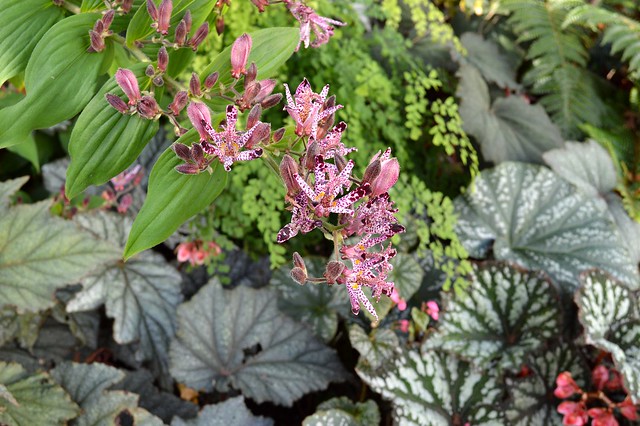
Tricyrtis 'Sinonome' brightens the fall garden
On October 8, 2013 I posted "Welcome to DC Tropics", the first of what has now become two years of blog posts. I missed the official anniversary because I was traveling, which seems to be my life lately. Because of my frequent travel during the past year, my blog posts have gone from 97 in the first year to only 58 in the past year... even though I've had a lot more to blog about! Little did I know when I started this blog how my life and my garden would change over the next two years.

Fatsia japonica flowers, November 2014
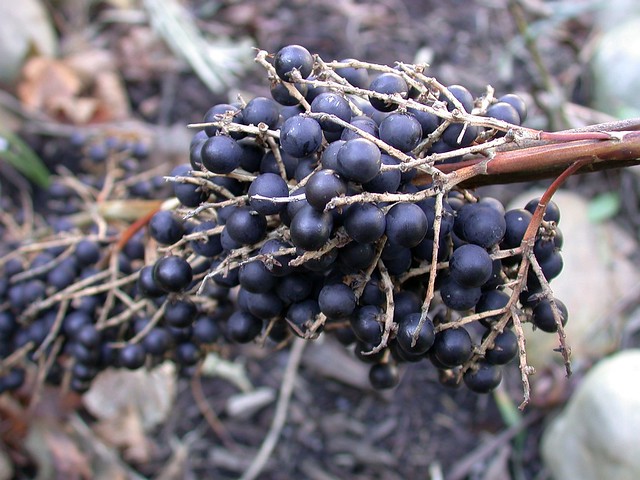
First fruit on Sabal minor 'McCurtain', December 2014
As I noted a year ago in A year of blogging, shortly after I began this blog my father suffered a massive stroke (one of the reasons for my frequent travel). Then my area had its coldest winter in 20 years, something I knew was overdue but like many gardeners pretended would never happen. That was bad enough but this past year we had another winter that was as cold, if not colder, and those two back-to-back cold winters have dramatically changed my garden. My windmill palms, which I blogged so heavily (some might say obsessively) about during that first year, are now gone.
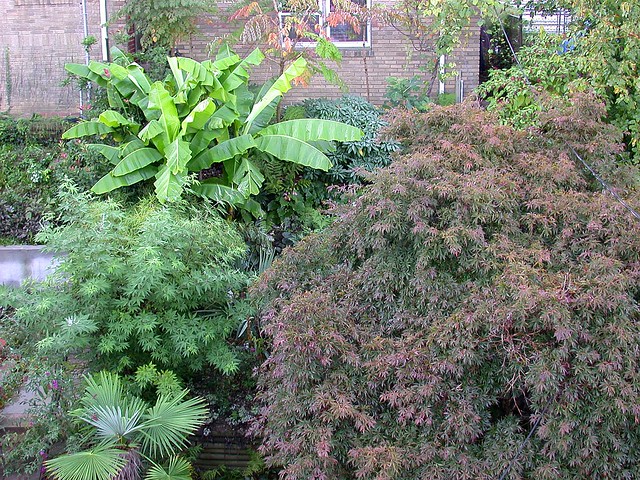
Garden, October 2014
Above is a view of my garden a year ago, recovering from that first cold winter. The palm in the lower left is my "Bulgarian" windmill palm (Trachycarpus fortunei), which was badly damaged by the 2013-2014 winter but survived and put out a new crown of leaves. As I feared, in its weakened state a second cold winter in a row proved too much for it. Below is how my garden looks now.
Garden, October 2015
Yep, there's the corpse of my windmill palm. Even the hardy banana (Musa basjoo) has been set back considerably. But I've had a few successes—for example that clump of Colocasia gigantea in the lower left, which has survived 3 winters with minimal protection—and having space open up in my densely planted garden has given me the opportunity to try a few new things. A friend sent me seeds of Tropaeolum moritzianum, a tropical American relative of the common garden nasturtium with very cool flowers. Its vigorously climbing habit proved perfect for covering up one of those pesky dead palm trunks! (The downside is that it's now covering about half of my garden.)
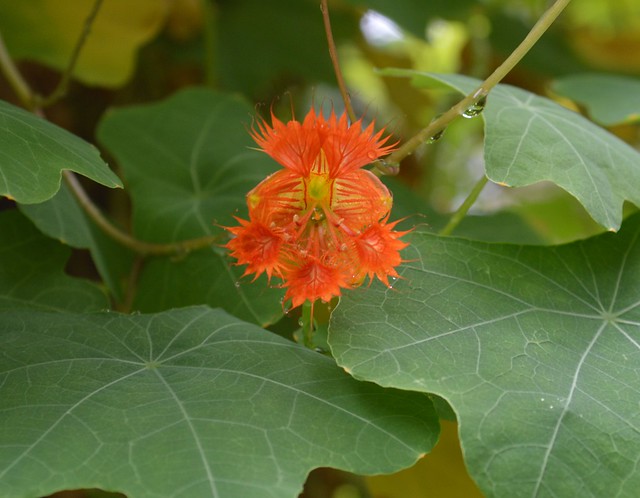
Tropaeolum moritzianum
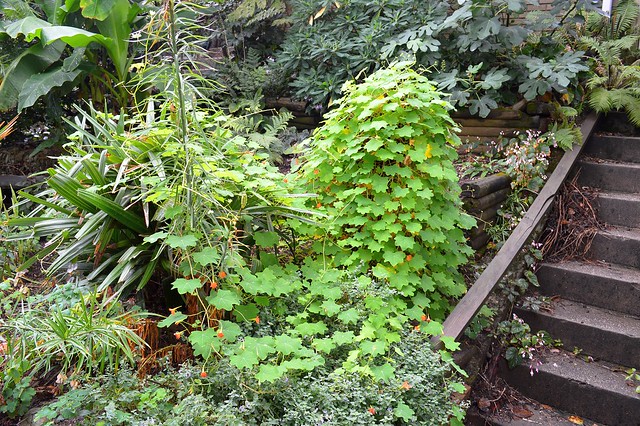
Tropaeolum moritzianum on dead windmill palm trunk
This is what it's come to: growing this year's plants on the decaying corpses of last year's. But isn't that life? Every year builds on top of the one before, the good with the bad. I've been trying hard to focus on the good, even as the last two years have been my garden's worst. Besides the winter losses, my garden has been woefully neglected because I've spent so much time out of town. I've made several trips to Buffalo, for holidays and to help with my father, who's in a nursing home following his stroke. (One truly awful visit in January reminded me what Buffalo winters are like, and why I don't live there anymore!) I've also traveled with my husband following the death of his own father, Dr. Ross V. Speck, first for a memorial service at his home in New Jersey in May, followed a few weeks later by his funeral in St. Catharines, Ontario, where he was born and where his ashes were finally laid to rest. The memorial service and funeral were an odd mix of sadness and pleasure, grieving his loss but also celebrating his life, and reconnecting and reminiscing with friends and family we haven't seen in years. Now his house has been sold, and somebody else will make a life there.
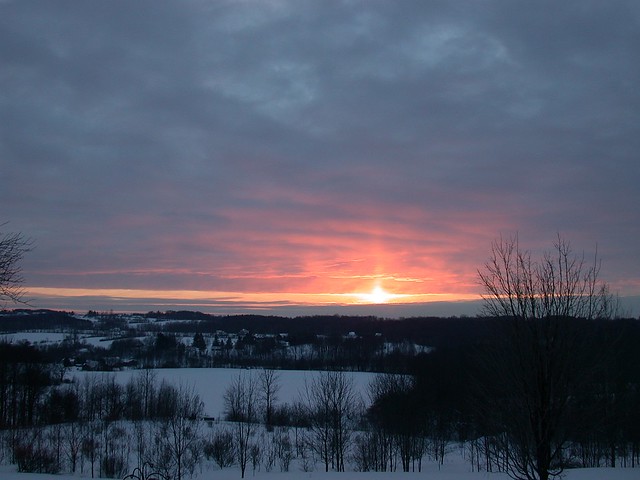
Winter sunset, Buffalo
Among my more pleasurable travels, I was in Baltimore in January for the Mid-Atlantic Nursery Trade Show (MANTS), spent a very busy five days in Ft. Lauderdale in February, and in March attended the Philadelphia Flower Show for the first time in over 20 years, an experience about which I had mixed feelings (see I hate the Philadelphia Flowers Show, but please note that I don't really hate it!). I suppose these count as vacations, but the truth is that I don't particularly like to travel. I always have to push myself (and be prodded by my husband), but a great incentive is the opportunity to see new gardens and meet fellow plant geeks. One thing I love about gardening is that you can make new friends, or run into old ones, just about anywhere you go.

Garden writers, Beating the winter blahs at MANTS (click here for more photos)
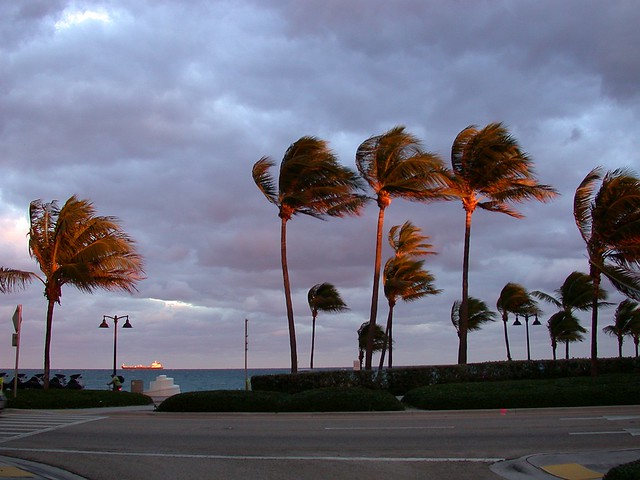
Coconut palms, Ft. Lauderdale (click here for more photos)
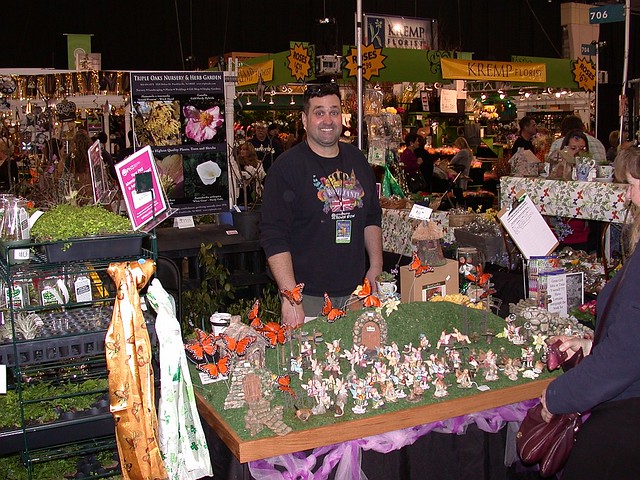
Joe Kiefer (Triple Oaks Nursery) at the Philadelphia Flower Show (click here for more photos)
Our visit to Ft. Lauderdale seemed to set the tone for the year in many respects. With my husband (definitely not a plant geek) reluctantly in tow I visited several gardens, including Stranahan Botanical Garden, a new garden in downtown Ft. Lauderdale; The Kampong in Coconut Grove; and Palm Hammock Orchid Estate, a Miami nursery specializing in begonias. I met many people, including botanist and palm expert Scott Zona, with whom I had corresponded for years but never met in person. And loss: we discovered that our wonderful vacation place of the last 10 years, Alhambra Beach Resort, was to be sold. Although I couldn't publicize it at the time, I can now confirm that it will be leveled next year along with several other older buildings on the block to make room for a new high-rise hotel. This seems to be the fate of much of Ft. Lauderdale (see Losing Ft. Lauderdale).
 Osmoxylon lineare (Araliaceae), Stranahan Botanical Garden, Ft. Lauderdale (click here for more photos)
Osmoxylon lineare (Araliaceae), Stranahan Botanical Garden, Ft. Lauderdale (click here for more photos)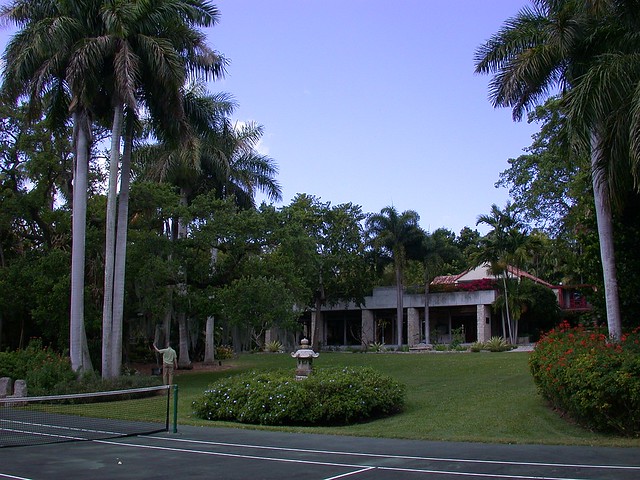
The Kampong, Coconut Grove (click here for more photos)
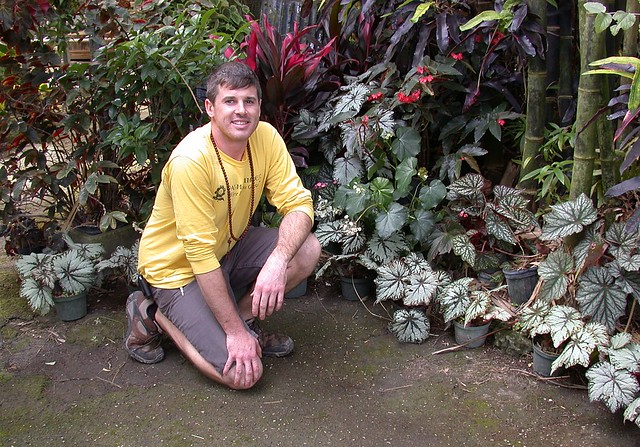
Donald, nursery manager at Palm Hammock Orchid Estate, Miami
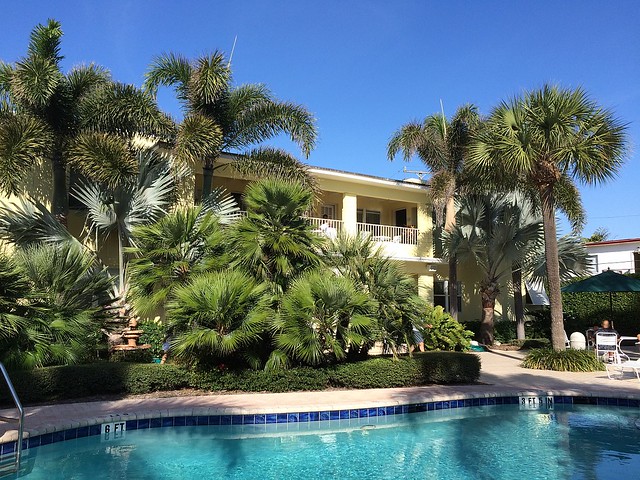
"Progress": Alhambra Beach Resort will be leveled to make way for a high-rise hotel

A sad good-bye to Matt Crescitelli (c), Alhambra Beach Resort co-owner
I've been thinking a lot about death and loss, and things beyond our control, but despite that (or because of it) I've been pushing the boundaries of my comfort zone to try new things and meet new people. My father-in-law's psychiatric specialty was family networks and he understood the importance of social networks decades before the advent of social media. I've been thinking of him as I've been networking through Facebook, plant societies, local garden clubs, and particularly two professional organizations I joined earlier this year, the Garden Writers Association (GWA) and the Perennial Plant Association (PPA). Through both groups I've met a lot of great people and seen some great gardens. In June I attended a GWA regional meeting in Philadelphia, with visits to Morris Arboretum and Chanticleer Garden, and in July the PPA national symposium in Baltimore (see Five days of plant geek pleasure).

"A Walk in the Woods", Morris Arboretum (click here for more photos)
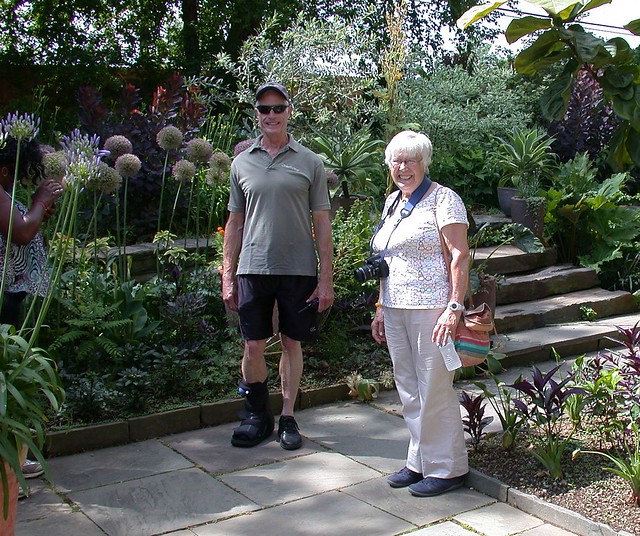
Bill Thomas and Ruth Rogers Clausen at Chanticleer Gardens (click here for more photos
Closer to home, I've visited many local public gardens: the various Smithsonian Gardens, the National Gallery of Art Sculpture Garden, the United States Botanical Garden, Kenilworth Aquatic Gardens (for the first time in 20 years), the United States National Arboretum, Green Spring Gardens in Alexandria, Virginia and one that has been completely off my radar, Meadowlark Botanical Gardens in Vienna, Virginia. I covered some of these gardens in Summer means great gardens in Washington, DC but I take far more photos than I can ever blog about. So I was pleased when local garden blogger Susan Harris approached me this year for permission to use some of my photos to help document our local public gardens through her new DC Gardens website, a much-needed project devoted to promoting and publicizing our area's many great (but often overlooked) public gardens.

National Gallery of Art Sculpture Garden

Urban Bird Habitat, Smithsonian Gardens (click here for more photos)
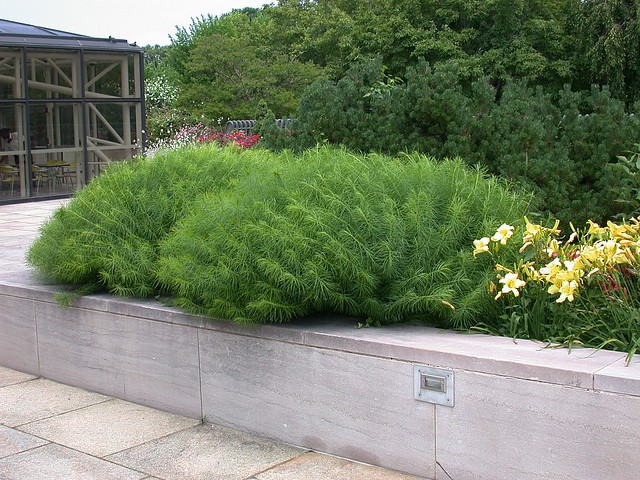
Amsonia hubrichtii, National Air and Space Museum
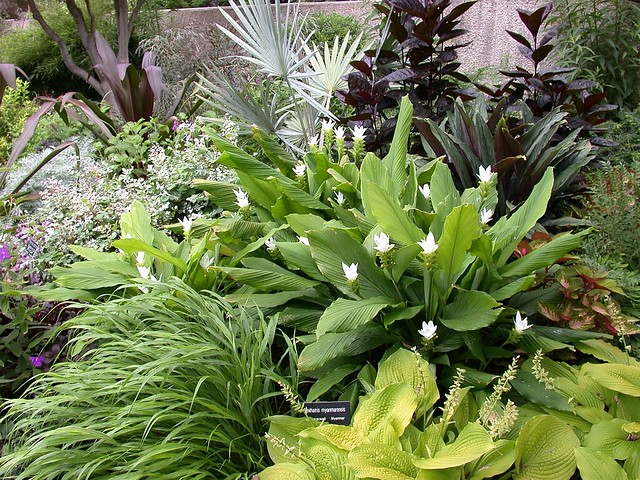
Smithatris myanmarensis, Mary Livingston Ripley Garden
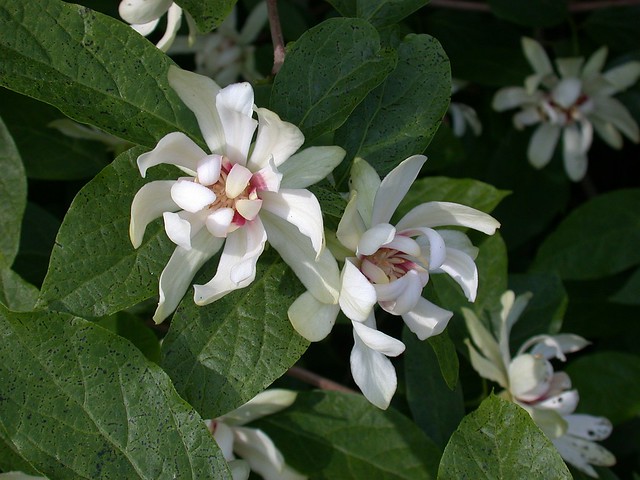
Calycanthus 'Venus', Green Spring Gardens (click here for more photos)
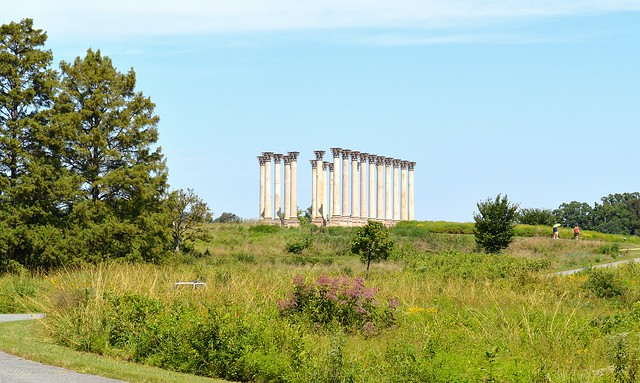
Capitol Columns, National Arboretum (click here for more photos)
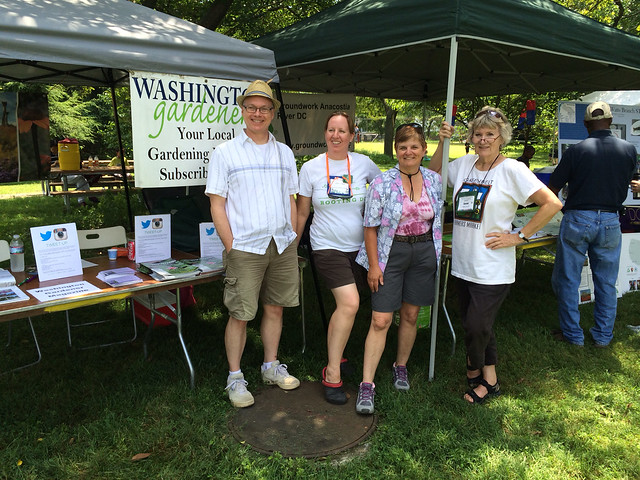
With fellow garden communicators at Kenilworth Aquatic Gardens (photo courtesy of Kathy Jentz, Washington Gardener Magazine)

Pinecone sculpture, Meadowlark Botanical Gardens
I've made the usual rounds of the usual local nurseries and garden centers, but I also visited Cavano's Perennials, a wholesale nursery north of Baltimore whose owners I met through the PPA symposium, and Putnam Hill Nursery, a small specialty nursery. I intended to, but never quite did, blog about these visits but click on the links below for photos.
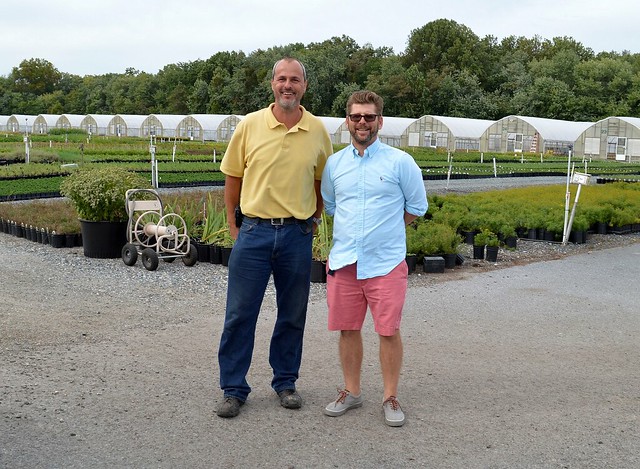
Ferenc Kiss and Taylor Pilker, owners of Cavano's Perennials (click here for more photos)
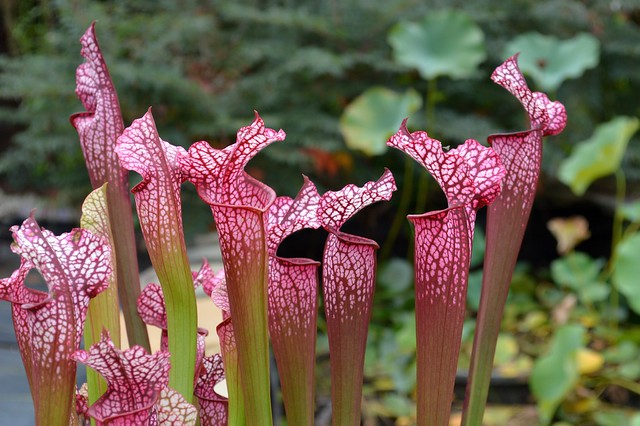
Sarracenia, Putnam Hill Nursery (click here for more photos)
Maybe someday these nurseries will be selling my own plants. My breeding program to produce hardy begonia hybrids has some very promising plants coming along. I lost a lot of begonias last winter but the survivors tell me that I'm heading in the right direction. Will any of them be commercial successes? It's too soon to say, but I was very pleased to see one of my gesneriads, Seemannia 'Little Red', listed in the Plant Delights Nursery catalog this year (see Tooting my own horn: Seemannia 'Little Red'). This plant came from a breeding program that I've set aside, not having enough time or space, but it's one I hope to come back to eventually as I think this genus has great commercial potential.
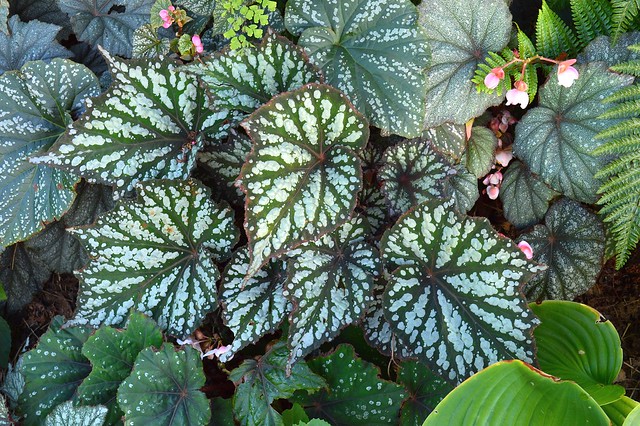
Begonia hybrid
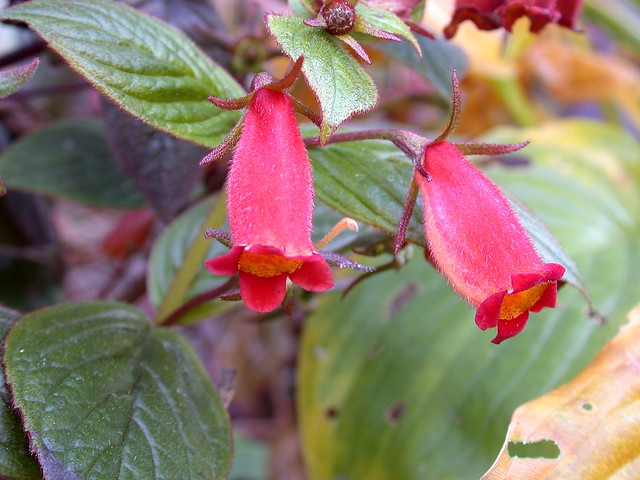
Seemannia hybrid (October 2014)
My most recent travels—and my excuse for missing my blogging anniversary—were to the University of Pennsylvania Museum of Archaeology and Anthropology in Philadelphia, better known as the Penn Museum, for a conference related to my work, immediately followed by a vacation weekend in Rehoboth Beach, Delaware. Of course I found and photographed gardens in both places! It was nice to see that at least some of the windmill palms at the Royal Rose Inn in Rehoboth Beach have survived the winters that killed my own. I was also treated to a tour of the future location of the Delaware Botanic Gardens at Pepper Creek in nearby Dagsboro, Delaware; this is a truly exciting project that I'll write more about in a future blog post.
Penn Museum, Philadelphia
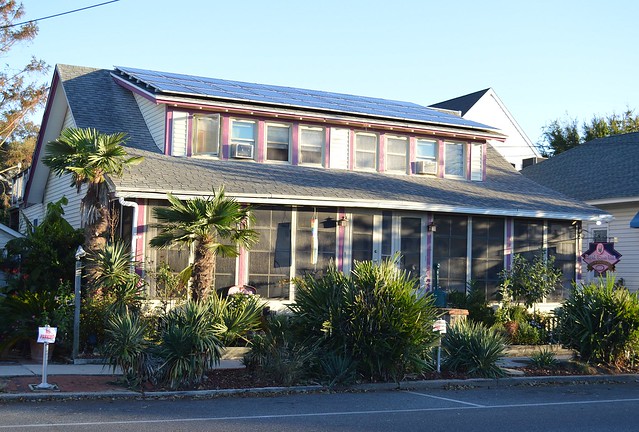
Royal Rose Inn, Rehoboth Beach, Delaware
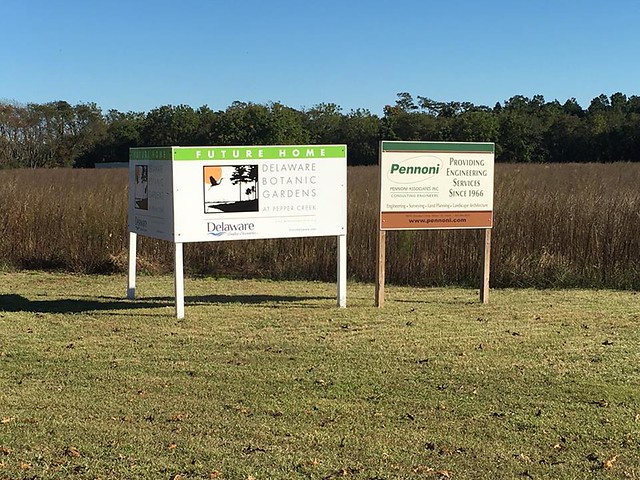
Future site of the Delaware Botanic Gardens at Pepper Creek
What does the next year have in store? Follow my blog to find out! You can also find me on Facebook or follow me on Twitter. A big thank you to all who have read my blog posts and especially those of you who have taken the time to comment on them. I'm very bad about replying to comments but I do read all of them, and appreciate them greatly!
The numbers
As of a week ago, my blog had accumulated 308,059 views; the most-viewed post is one of my earliest, Fabulous Fatsia, with 55,490 views. That post still gets numerous views every day, for reasons I don't entirely understand. The vast majority of blog views apparently come from web crawlers for Google and other search engines, spambots, and other non-human eyes. Sometime in the last year Blogger greatly improved its spam filtering; view counts plummeted shortly afterward and I don't think that was a coincidence. View counts for the last year are probably a bit more believable.
With 2,324 views and 16 comments (not counting my own), Losing Fort Lauderdale—about the city losing its character and charm as it becomes a more popular vacation spot—was both my most-viewed and most-commented blog post of the last year, in part because it was shared on Facebook by several pages and people, and in part because it struck a nerve with many readers. This is the closest I've come yet to any of my blog posts going "viral". My top 5 posts by view number are:
Losing Fort Lauderdale (2,324 views)
Beyond Begonia grandis: new hardy begonias (2,191 views)
Hardy begonias the next generation (1,862 views)
Hardy palms of Rehoboth Beach (1,437 views)
Smithsonian Gardens, part 3: Enid A. Haupt Garden (989 views)
But, since the older post have also had more time to accumulate views, here are my 5 most-viewed posts of the last 6 months:
No-name begonias (544 views)
Testing the limits: 2015 winners (513 views)
Summer means great gardens in Washington, DC (449 views)
Big Begonia grandis (437 views)
Cannas for the lazy gardener (424 views)

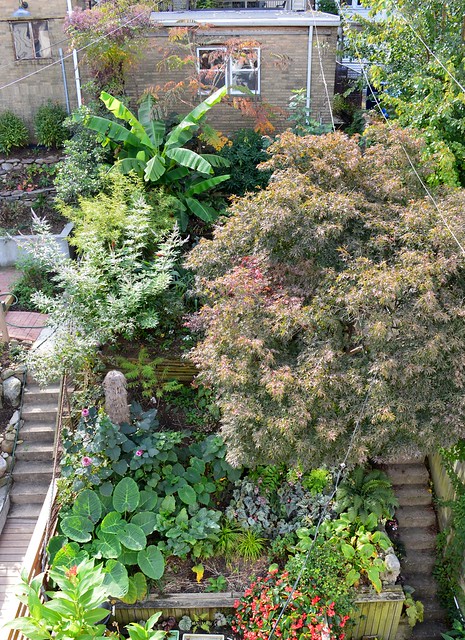
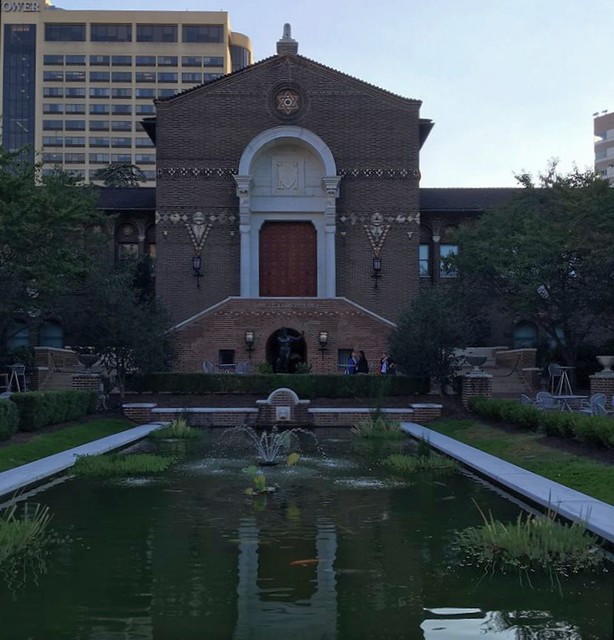
John,
ReplyDeletePlease continue with your winter-hardy Begonia project. Carefree perennial Begonias with interesting foliage will be a great gift to the gardening world.
Your blog stories are unique and interesting. I’m glad that you find time to work on them.
Gary
Thanks Gary, I'm glad you've enjoyed my blog posts. Not sure my begonias will ever be "carefree" but I do hope to improve their hardiness!
DeleteI've enjoyed reading your posts over the years, even though I seldom comment, and even remember your postings on even older forums such as Gardenweb. As so much of what you grow isn't really as doable here on the West Coast, I just admire the talent and dedication, more so than growing the same plants. But I must admit I've come around to using Trachycarpus fortunei and T. martianus much more in garden designs these days, as much for their ease of culture as being so much more cold tolerant than my initial fascination with the subtropical Kentia and King palms. I also admire the dedication to hybridizing from seed, when I can barely manage to even get around to planting any of the seeds I seem to obsessively collect from my rare plants, and usually fail to pass on to anyone who might grow them on.
ReplyDeleteKeep on blogging!
David in Berkeley
Thanks David, our gardening climates are certainly very different. I envy the begonias you can grow year-round there, not to mention the windmill palms!
DeleteHi John,
ReplyDeleteThanks for sharing all these gardens. I may never make it to the east coast to see any of them so I appreciate your snap shots. I got a big laugh at the sculpture in the National Gallery of Art Sculpture Garden. I wonder how many people go through there and have no idea what it is.
I hope your begonia program continues to be successful, they are one of my favorite plants but I don't think many enjoy the heat of So. California.
And lastly, it is sad to see that little gem of a resort succumb to the march of development.
Thanks Judy, I get that same comment from everybody over a certain age who sees that sculpture!
DeleteMy begonias have mostly held up quite well in our hot summers here in DC, so there's hope for them out there. Not sure just what your climate is like but I have a friend growing begonias in Sacramento, where the days are often much hotter than here but the nights cool down much more, which he thinks allows them to survive the heat.
Can't believe it's only been 2 years coz you're such a big part of the garden-writing community and were instantly, I guess.
ReplyDeleteSO glad you joined our humble ranks, and thanks so much for contributing your photos to DCGardens.com!
Thanks Susan! One great thing about blogging has been getting to know people like you.
DeleteHooray for having a plant picked up by Plant Delights! That's awesome! Congrats. :o) I was recently wondering if any of my annual begonias were worth wintering over and immediately thought of you. :o)
ReplyDeleteBelated congratulations to you! After reading this post, I wonder - do you have time to sleep?
ReplyDeleteIf you want to enhance the beauty of your garden, choose from the wide variety of fauna offered by our exotic plant nursery Sussex. We at Athelas Plants have created a name for offering the widest range of shrubs, trees and grasses and other plants to suit your individual requirements and preferences.
ReplyDeletePlant Nurseries East Sussex